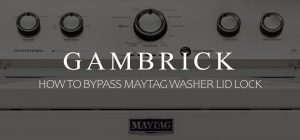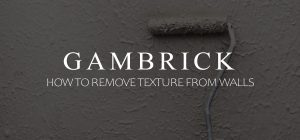
Can Old Concrete Be Stained?
I’ve been a mason for over 25 years, and one of the most common questions I’m asked about old concrete is whether or not it can be stained. Concrete patios and walkways are beautiful, but can look dated over time, especially if they’re not maintained. The answer is yes, you can stain old concrete. The process isn’t any different from staining new concrete, simply apply the stain with a tough roller and brush that won’t get chewed up by the gritty texture of the concrete. Apply stain evenly and let it soak into the concrete where it will gradually tiny the concrete a new color.
Concrete stains are colored washes that soak into the pores of your concrete. They’re not a surface covering like paint. If the stain can’t soak into your concrete’s pores, then it won’t cover as intended. So before staining, clean the concrete of all gunk, debris, dirt, grease, etc.
The effectiveness of stain has nothing to with the age of the concrete, it’s about the concrete’s condition.
Stay away from acrylics and paint. Both paint and acrylic “stains” disguised as paint, are surface covering and not actual stains. They don’t absorb into the concrete. In time, they’ll peel up and look terrible, which costs money in the long run.
Concrete stains come in two basic forms, water based and acid based. Acid based stains are more durable, which makes them better for outdoor use. They can protect the concrete from damage caused by rain, snow, ice, heat, and outdoor rugs. But the colors are muted and subtle. Water based stains can wash out and are less durable, but the colors are bolder and brighter like paint. They’re better suited for indoor use.
Concrete Stain Is Permanent
Keep in mind that once you stain your old concrete surface, the color is permanent.Stain penetrates and absorbs into the concrete’s pores. Stain isn’t like a paint or acrylic. It’s not a surface level covering. There’s no way to remove it once applied.
Color samples should always be done on the concrete before you stain it. Unlike paint, stains penetrate into the concrete which makes future color changes very hard to do.
Surrounding areas should be carefully masked off to avoid unintentional staining, especially when working indoors. Acid stains can be tough and sometimes impossible to remove.
Can Your Old Concrete Be Stained?
Staining old and dated concrete is a fun and easy way to freshen up your concrete surface. But the concrete has to be clean and free from any debris. Many people think old concrete can’t be stained because they’ve heard stories of staining jobs gone bad. But typically that’s not because of the the concrete’s age but rather it’s condition. Even new concrete can’t be acid stained if it’s dirty, grimy, covered with sealant or paint.
In order to stain your concrete it must be bare, clean concrete.
This is because of how acid stains work. Concrete acid stains are a very thin mixture of coloring and chemicals that, when poured onto a concrete surface, absorb into the concrete’s pores and create color. If the acid stain can’t absorb then it won’t work.
Since acid stain has to soak into the concrete’s pores, you can’t acid stain concrete if it’s pores are full. All sorts of things can fill pores but the most common problems are sealers, paint, dirt and grime.
Paint, epoxy, and sealants coat the concrete and seep into it’s pores which blocks the stain. It doesn’t matter how old the concrete is, if it’s pores are filled the stain won’t work.
The good news is, as long as you clean the concrete properly you can stain it. Regardless of it’s age.
If you’ve got older concrete that’s been painted or sealed then don’t worry. There are a few ways to remove it.
Do not use muriatic acid to clean your old concrete. It will destroy important minerals necessary to produce the color range you want from a concrete stain.
Removing Paint
The best way to remove paint from your concrete surface is an industrial strength paint remover. Pour it over the surface and wait for it to work. Paint removers cause paint to lift off the concrete.
Once you see the paint start to soften and lift from the surface of your concrete, take a hand scraper or power washer and remove as much paint as possible. You probably won’t be able to get it all in one application. So Repeat the process as many times as needed to remove all the paint.
After the paint is removed, clean and dry the concrete.
Removing Sealant
A sealant is often used on concrete to protect it from water damage. It’s something that we recommend for just about any concrete patio surface. But it prevents the use of a stain because the sealant penetrates into the pores which blocks the stain.
You can use a seal and a stain together but the stain has to go on first. The sealant is applied on top of the stain.
Removing sealant is a lot easier than paint. Most sealer actually fades away over time which is why you have to reseal concrete every few years. A pressure washer can be used to wash away sealant if you don’t want to wait for it to fade naturally.
If you want to remove a tough sealant, try a product called Xylene. Pour it onto the concrete and let sit for 30 seconds or so, then scrub with a stiff brush. Finally, use a scraper to remove sealer as it comes off. Repeat as needed. Keep pouring xylene, scrubbing and scraping until the entire surface is free of any sealer.
Removing Wax
If the concrete has wax built up, you’ll need to use a floor wax remover.
Apply the floor wax remover to the old concrete areas that have wax, let it sit for a while, then scrub it with a soft bristle brush. Mop effected area as you go until the floor wax is completely removed.
Note: If you need to remove wax and another issue like a sealer, acrylic or paint, then remove the other elements first. Most of the time, the method you use to remove them will also clean off the wax.
Removing Epoxy
Epoxy is sometimes used to finish concrete and it can’t be stained over. If you’ve got an epoxy finish then it’ll have to be removed prior to staining.
Epoxy is harder to remove than paint and a sealer.
The best ways to remove epoxy from concrete are:
- Acetone. Soak the concrete is acetone and wait until it’s soft enough to scrape off.
- Paint Thinner. Use the same method as with acetone.
- Heat Gun. Melt and scrape the epoxy off of your concrete a small section at a time.
- Sanding. It’s an extreme option but you can sand the top layer of concrete off if you have to. This will remove any trace of the acrylic and create a smooth surface to stain.
You can also use a combination of the three methods shown above. Soak the concrete in either acetone of paint thinner and scrape when ready. Use the heat gun as needed for hard to clean areas.
Repair The Surface
It’s very important to not only clean the surface but to also prep it.
Once the surface is clean and dry, repair cracks in the old concrete surface. All repairs should be completed before starting to stain. Use a concrete crack sealant according to product instructions to fill any gaps along the floor or fill them with fresh concrete or cement. Allow at least 24 hours for the repairs to fully dry. Finally, use a floor scrubber to buff away any uneven patches of repair material.
Acid Staining Old Concrete
Remember, staining old concrete is no different than staining new. It’s all about the concrete’s condition. Once it’s clean and dry you can get to work.
Old concrete is more likely to have dirt, mildew, sealant, paint, or substances lodged in it’s pores. Cleaning is an essential step that you shouldn’t skip.
Once all the major issues like old sealant, paint, or acrylic is removed, clean the concrete by sweeping, mopping, and scrubbing it with a concrete wash or simple soap and hot water. If any dirt, dust, pollen or other substances are left on your concrete, they will be noticeable after staining.
Test For Old Sealants
It’s so important to make sure that you stain bare and clean concrete, you should do a test to make sure.
The simplest way to test your concrete is by pouring a little water over the entire surface. If the water soaks in, then you can start staining. If water absorbs into the pores then so will stain. But if water beads up or sits on top of the concrete, there’s still some sealant you need to clean off.
Paint and acrylic are easy to spot. Clean off anywhere that isn’t bare concrete.
Performing a test like this is a good last step because if there’s still some sealant when you start staining, those areas won’t hold stain and your concrete will look blotchy.
Color Test The Concrete
Stains can look a little different on actual concrete then they do on a test swab or picture. Stains react to the concrete they’re applied to. It’s not like using a paint where the color is exactly what the sample looks like. For this reason you need to do a little testing.
Apply some stain to a small test area before staining the entire surface. Pick an area that won’t be noticed. Stain a very small spot and see what the color looks like when dry.
If you don’t like the color, adjust as needed and re-test.
Applying The Stain
This is the easy part. Apply the stain with a brush or roller evenly to the entire surface and let it dry completely.
Old concrete is sometime warn and more porous. It doesn’t effect the staining process but it can cause the concrete to soak up more stain. Order a little extra to ensure that you get a thorough coat. Depending on how old and porous the concrete is, the stain’s coverage can be reduced by as much as 20% to 50% or more.
Old concrete that has big pores or exposed stone can really suck up stain. It doesn’t change the process, but it means you’ll need more stain to do the job. The bigger the pores, the more stain you’ll need to fill them.
If you’ve got cracks then they should be filled prior to staining. If the cracks are left then stain will be poured into the cracks and wasted. Again, this doesn’t effect the staining process, you’ll just need more product.
Seal The Concrete
You don’t have to seal acid stained concrete, but I recommend that you do. A sealer coat helps maintain the appearance of your stained concrete and protects it from weather damage and water.
Apply the sealer at the very end once your stain is completely dry. I suggest using a water based sealer rather than solvent based. Pour the concrete sealer into a paint pan and apply using a small roller.
Apply a water base sealer in as thin and even a coat as you can. Apply one coat working in one direction, for example up and down, and allow it to dry completely clear. Then apply a second coat side to side. By applying the sealer in different directions you make sure to penetrate all the little pores.
If your concrete still has a patchy or dry appearance after two coats, you can apply additional coats as needed. Try applying the 3rd coats on angles you didn’t hit the first two times.
Don’t over apply the concrete sealer or you’ll get a cloudy or milky looking finish.
Sprayers can also be used to apply a sealer but I prefer to do it with a roller. In some cases we’ll apply the first coat with a sprayer and later coats by hand as needed. Spraying is definitely faster and easier but doesn’t always get into all the little pores. On some older concrete that’s an issue since old concrete tends to be a bit more porous. Especially when it’s outdoors.
Tips
Here are a few final tips and but on information that may be helpful.
- Multiple Coats. If your concrete is old, It may have been stained before. Unfortunately, concrete stain can’t be removed, but you can stain over it. However, this second layer of stain won’t take as well as a fresh coat and the color will be different because it’ll blend with the original color. This isn’t necessarily a bad thing though.
- Applying Stain. Before you stain, get a large bucket and mix multiple bottles of stain together into one big batch. The reason we do this is because smaller individual bottles can be slightly different in color. By mixing them all together you get an even and equal coloring.
- Smooth Transitions: To guarantee your stain has a smooth, even look, always stain the entire surface on each coat with a wet edge. If you leave an edge to dry and then come back later, you’ll be able to see the line.
- Over Application: Don’t apply too much or uneven stain. Staining isn’t like painting. Multiple coats can change the color below which can look uneven.
Summary: Can Old Concrete Be Stained?
I’ve been a mason for over 25 years, and one of the most common questions I’m asked about old concrete is whether or not it can be stained. Concrete patios and walkways are beautiful, but can look dated over time, especially if they’re not maintained. The answer is yes, you can stain old concrete. The process isn’t any different from staining new concrete, simply apply the stain with a tough roller and brush that won’t get chewed up by the gritty texture of the concrete. Apply stain evenly and let it soak into the concrete where it will gradually tiny the concrete a new color.
Concrete stains are colored washes that soak into the pores of your concrete. They’re not a surface covering like paint. If the stain can’t soak into your concrete’s pores, then it won’t cover as intended. So before staining, clean the concrete of all gunk, debris, dirt, grease, etc.
The effectiveness of stain has nothing to with the age of the concrete, it’s about the concrete’s condition.
Stay away from acrylics and paint. Both paint and acrylic “stains” disguised as paint, are surface covering and not actual stains. They don’t absorb into the concrete. In time, they’ll peel up and look terrible, which costs money in the long run.
Concrete stains come in two basic forms, water based and acid based. Acid based stains are more durable, which makes them better for outdoor use. They can protect the concrete from damage caused by rain, snow, ice, heat, and outdoor rugs. But the colors are muted and subtle. Water based stains can wash out and are less durable, but the colors are bolder and brighter like paint. They’re better suited for indoor use.
If you have any questions or comments email us any time.

John Mazzuca | About | More Posts |
Custom Home Builder
John Mazzuca is a custom home designer and builder at Gambrick with over 25 years experience in the construction industry. John has designed, built and/or remodeled hundreds of homes, small buildings, and commercial projects. He writes about business, real estate, home building, and household electronics. His work has been featured in Fox Business, Better Homes & Garden, House Beautiful, and more.




















